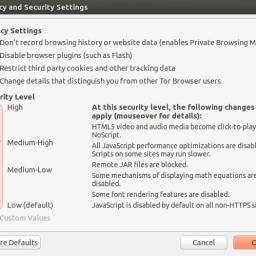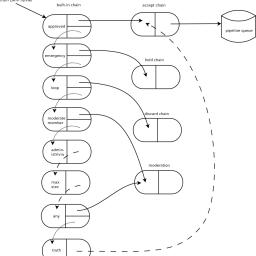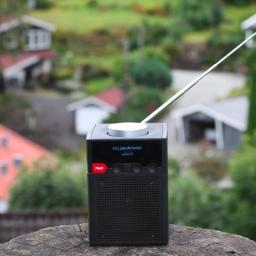
Never saw this one coming: Enlightenment has been forked. The new product is called Moksha (Sanscrit: "emancipation, freedom") and is based not on the newest version of Enlightenment, E19, but rather an older version, E17.
Behind Moksha is Jeff Hoogland and the folks at Bodhi Linux, who got frustrated with the turn that Enlightenment development has taken, and believe Moksha will be the path that takes the useful, stable release of E17 and makes it into something better. From Hoogland's blog:
Bodhi has always been a project based around the Enlightenment desktop.
The Enlightenment desktop however has changed a lot over the last few years. It went from being the "Duke Nukem Forever" of open source software without an official release in over a decade to having three new "major" versions released in the course of the last three years.
The problem with these major releases is that instead of continuing to perfect the end user facing components E17 started over the course of a decade, they were essentially internal tear downs. While optimizations are a good thing to be had, optimizations that break existing features users enjoy and use are bad. These tear downs were rushed to meet release deadlines and did not have the same quality and stability the E17 desktop had come to know.
The E18 desktop was so bad Bodhi skipped it entirely (although you can still find old packages in the 2.4.0 testing branch). When E19 released in the fall of 2014 it did make things better, but that was not difficult considering the mess E18 was.
E19 was usable enough that I gave it an honest try. I spent hours working with the upstream developers and filing bug reports. The biggest issue was that none of the Enlightenment developers were using E19 as their daily desktop. As soon as it was released they jumped on to their next rewrite - E20.
After my umpteeth bug report was met with "Works with E from Git" I was ready to call it quits. In fact for several months I did essentially quit. I was so frustrated I stepped away from the project I had devoted countless hours to over four years.
Submitter note: As an Enlightenment fan, this is interesting, but worrying. Enlightenment is a big code base, and a lot of work to take on. Hope they can make it work - E17 is a fantastic desktop!

The Tor project has decided to stop using the Startpage search engine and will be standardizing on the
Disconnect Search Engine, a project that, in theory, uses VPN technology to permit you to use Google, Bing, and Yahoo search services without revealing your IP address or any personal information that would allow companies to build a profile using data revealed as you search. Disconnect
was written by former Google and NSA engineers.
Sound like a good choice of technology?
Not everyone is impressed. Though the Tor project has stated that
Startpage was not happy with our traffic and showed sometimes CAPTCHAs. Disconnect on the other hand approached us with respect to search engine traffic and donated some money, a few choice comments from the article reveal that many users wonder whether money had anything to do with the change in technologies.
What prompted the change in search engine? Are we now getting paid to include disconnect as the default search engine?"
and
So what's next, Torproject? Keystroke logging for Amazon or another company? Partnering with Recorded Future or something like it? Is this what the project has come to now? But that "Disconnect" Search Engine site is so pretty. So nice and clean, WOW! It sort of reminds me of the polished DoD sites I have wandered through.
and
With this new "Search Engine", I feel like a rug is being pulled out from underneath me and damn it "that rug really tied the room together."
What say the |.ers?

(Finally) after years of development,
Mailman has reached its
third release.
It's a big change, thoroughly explained in this
(not so) old article by Barry Warsaw, the lead developer behind Mailman 3.0. In short, Mailman has been organized as a suite of 5 subprojects, each in charge of a different aspect:
- Mailman Core - the core delivery engine which accepts messages, providers moderation and processing of the messages, and delivers messages to mailing list member recipients. It exposes its functionality to other components over a private, administrative REST API.
- Postorius - A new Django-based web user interface for end users and list administrators.
- HyperKitty - A new Django-based web archiver.
- mailman.client - The official Python 2 and 3 bindings to the administrative REST API. Used by Postorius and HyperKitty, this provides a convenient, object-based API for programmatic access to the Core.
- mailman-bundler - A convenient package for building out the entire Mailman suite.
Among the new shiny things:
What's new about Mailman 3? Well, lots! Some highlights include:- Backed by a relational database;
- True support for multiple domains, with no cross-domain mailing list naming restrictions;
- One user account to manage all your subscriptions on a site;
- The core's functionality exposed through an administrative REST+JSON API;
- All passwords hashed by default, and no monthly password reminders!
- Users can post to lists via the web interface;
- Built-in archive searching!
and more. Tons more.
Note that it is not recommended to update your lists from 2.x to 3.0 zero yet as it may not go smoothly. The update feature is planned for 3.1 but if you've got some test machine, feel free to play around with the update and report bugs.
[submitter's note]: some details in the announcements seemed a bit weird to me, notable, I quote, "The core requires Python 3.4 while Postorius and HyperKitty require Python 2.7.". Why use two different (and maybe incompatible) versions of python ? Another one is about the API numbering scheme. Well, we'll see how it goes ...
A hi-tech signalling system that will eventually control all of Britain's trains
could potentially be hacked to cause a serious crash, according to a scientist who advises the government. Network Rail, which is in charge of the upgrade, acknowledges the threat. "We know that the risk [of a cyber-attack] will increase as we continue to roll out digital technology across the network," a spokesman told the BBC.
"Certain ministers know this is absolutely possible and they are worried about it. Safeguards are going in, in secret, but it's always possible to get around them." He added that part of the reason that transport systems had not already been hacked as frequently as financial institutions and media organisations was that much of the technology involved was currently too old to be vulnerable. All of that will change in the coming years, as aircraft, cars and trains become progressively more computerised and connected, he said.
Of all the potential solutions offered for Arizona's water challenges, one has a decidedly science fiction feel: planes flying over the Rockies,
seeding clouds with aerosolized silver iodide to stimulate rain and snow. It's not magic or raindancing but a
very real process that dates back to the 1940s. Cloud seeding works by adding ice nuclei, or the initial seed of a rain drop or snowflake, into a cloud that has extra moisture. That's typically done with silver iodide in an aerosol form. The Central Arizona Project has put about $1 million toward research since 2007, in hopes of increasing the supply in the Colorado River system.
A recent Wyoming Weather Modification pilot project suggested cloud seeding causes an increase of seasonal snow water accumulations of 5 to 15 percent and a 1.8 percent increase in stream-flows. "Percentage-wise, that might seem modest, but for the investment you put in that's actually pretty good," Mahmoud said. Compared to other alternatives for water augmentation, like desalinating seawater, cloud seeding is the cheapest option. "It's a simple way to try to have a new supply in our efforts to mitigate potential shortage on the Colorado River that could happen as early as 2016 or 2017," he said.

Anyone who spends significant time on aircraft probably agrees that internet access at 30,000 feet is pretty cool. But only if the internet access system isn't stupidly tethered to other aircraft systems of critical importance.
Find myself on a 737/800, lets see Box-IFE-ICE-SATCOM, ? Shall we start playing with EICAS messages? "PASS OXYGEN ON" Anyone ? :)
- Chris Roberts (@Sidragon1) April 15, 2015
The tweet was a joke laced with sarcasm. Roberts is a veteran of the vulnerability disclosure wars, having tried for years to get Boeing and Airbus to heed warnings about security issues with their passenger communications systems. His tweet about the Engine Indicator Crew Alert System, or EICAS, was a reference to research he'd done years ago on vulnerabilities in inflight infotainment networks, vulnerabilities that could allow an attacker to access cabin controls and deploy a plane's oxygen masks.
It was the wrong message to send. The Feds were waiting when Roberts landed in Syracuse.
Chris Roberts may be pushing buttons on purpose here, but as a security researcher, he's asking the right question about the corporate culture of disclosing and patching vulnerabilities. And the airline industry as a whole has some maturing to do with regard to this well-worn topic.
Today, Google unveiled it's long anticipated mobile phone service, called
Project Fi. However, Google is not building their own network, but relying on the existing Sprint and T-Mobile networks. Because the service can intelligently switch from one LTE network to the other, depending on signal strength, access is initially limited to Nexus 6 owners. Project Fi phones will need a cellular radio that can work with different network types and support a unique SIM that grants access to multiple networks.
The new service will cost $20 a month for unlimited voice and text, plus $10 a month per GB of data used. Interestingly, any unused fraction of data transfer per month is refunded at the same flat rate. For example, if you only use 200 MB of your $10/month data plan, you get an $8 refund.
Another interesting tidbit is how the service uses Wi-Fi. They claim voice calls can transition seamlessly between Wi-Fi hotspots and cell networks. Google has apparently cataloged over a million access points and will automatically connect you to verified hot spots. Also, all data transferred while using an open Wi-Fi hotspot is automatically encrypted through a built-in VPN-like service.
In the software world, it's long been the practice that you don't purchase software, you purchase a license to use it. But as software increasingly gets woven into other products - like the many chips and circuits that run your modern automobile - this practice starts to chip away at the traditional sense of ownership of physical goods.
In a particularly spectacular display of corporate delusion, John Deere-the world's largest agricultural machinery maker -told the Copyright Office that farmers don't own their tractors. Because computer code snakes through the DNA of modern tractors, farmers receive "an implied license for the life of the vehicle to operate the vehicle."
It's John Deere's tractor, folks. You're just driving it.
Several manufacturers recently submitted similar comments to the Copyright Office under an inquiry into the Digital Millennium Copyright Act. DMCA is a vast 1998 copyright law that (among other things) governs the blurry line between software and hardware. The Copyright Office, after reading the comments and holding a hearing, will decide in July which high-tech devices we can modify, hack, and repair-and decide whether John Deere's twisted vision of ownership will become a reality.
It's a conversation with profound implications for the future.
Check out the rest at Wired.

Norway is making an historic move into a new radio era, being the first country in the world to decide upon
an analog switch-off for all major radio channels. Several countries in Europe and Southeast Asia are in similar processes, choosing DAB-technology as the backbone of future radio distribution. Norway began the transition to DAB back in 1995. The DAB-coverage in Norway now exceeds FM-coverage. DAB provides Norway with 22 national channels, as opposed to five channels transmitting nationwide on FM.
"We can finally complete the work that has been on-going for many years. This is the best solution for all listeners throughout Norway, as they now have a better radio." 56 per cent of radio listeners use digital radio every day. 55 per cent of households have at least one DAB radio. While 44 % of listeners only use FM radio daily, according to Digitalradio survey by TNS Gallup. Switch-off starts in Nordland county 11th January 2017 and ends with the northernmost counties Troms and Finnmark 13th December 2017.
 Never saw this one coming: Enlightenment has been forked. The new product is called Moksha (Sanscrit: "emancipation, freedom") and is based not on the newest version of Enlightenment, E19, but rather an older version, E17. Behind Moksha is Jeff Hoogland and the folks at Bodhi Linux, who got frustrated with the turn that Enlightenment development has taken, and believe Moksha will be the path that takes the useful, stable release of E17 and makes it into something better. From Hoogland's blog:
Never saw this one coming: Enlightenment has been forked. The new product is called Moksha (Sanscrit: "emancipation, freedom") and is based not on the newest version of Enlightenment, E19, but rather an older version, E17. Behind Moksha is Jeff Hoogland and the folks at Bodhi Linux, who got frustrated with the turn that Enlightenment development has taken, and believe Moksha will be the path that takes the useful, stable release of E17 and makes it into something better. From Hoogland's blog:



